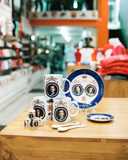December 2015 / January 2016 / Spain
Expo 89: New look
Portraits of leaders past and present are ubiquitous in Turkey, Spain and Morocco. Monocle paints a picture of their popularity – and peers beneath the surface to learn the history of their peculiar reign.
New look
Spain
The announcement came unexpectedly on a Monday morning in June 2014: after 39 years, Spain’s King Juan Carlos would be ceding the throne to his son Felipe. At the age of 46, the prince was set to become Europe’s youngest monarch. As the nation erupted with chatter about the imminent abdication, a very different flurry of activity was swinging into motion; the royal portraits adorning the country’s courtrooms, council chambers and classrooms would need to reflect the transition too.
As a 7,000-strong security complement turned out for Felipe Juan Pablo Alfonso de Todos los Santos de Borbón y Greci’s coronation, behind the scenes thousands of portraits of the emeritus king were being unhooked and replaced. In a matter of weeks a new image needed to take pride of place on the walls of 8,115 town halls, 520 national government agencies and 300 courtrooms, as well as police stations, military installations and schools – 3,400 of which reside in the Madrid region alone. It also needed to fit snugly into existing frames to avoid incurring further costs for Spain’s cash-strapped authorities.
The royal brand was in desperate need of a revamp. During the dying days of Juan Carlos’s reign a series of scandals – including a poorly judged African hunting trip – had put the Spanish royal family on notice. One opinion poll pegged the monarchy’s approval rating at 30 per cent.


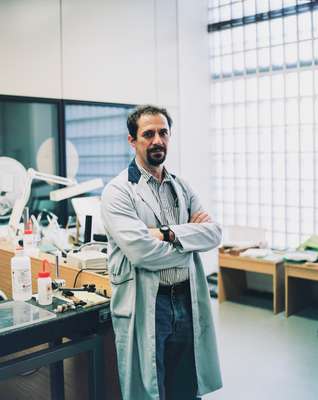

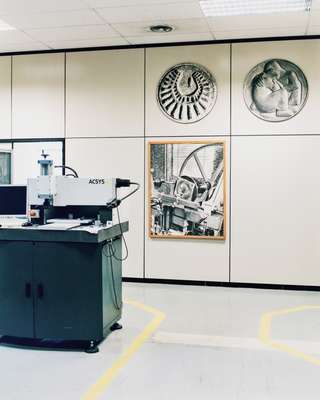

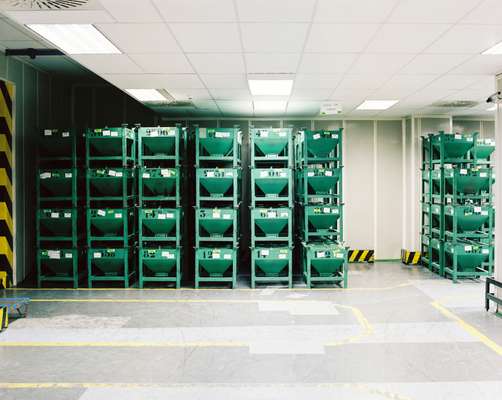
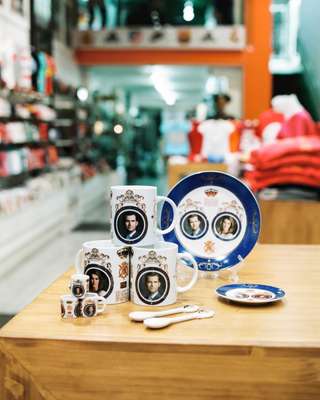

While the accession appeared sudden, the Spanish photographer Daniel Virgili had taken the new king’s official portrait series years earlier. In 2009, when Felipe and his wife Letizia Ortiz were still known as the Princes of Asturias, Virgili was summoned to the royal household to discuss shooting a series of portraits. “I anticipated a lengthy vetting process with royal protocol officials but found myself sitting opposite the crown prince and princess in the very first meeting,” says Virgili as he recalls the five separate shoots that followed, during which the hands-on king was involved in everything from striking the right tone to selecting the perfect tie. “They were aware of the importance of these images. It wasn’t just a question of getting the most attractive shot; we needed to convey a complex array of ideas. They were almost paradoxical: tradition and modernity, youth and maturity, solemnity but also novelty.”
The portrait series – including solo portraits of the king and queen, another of the royal couple and three of Felipe in military garb – added a touch of modernity to the ailing institution. At 1.97m tall, the former Olympic sailor is synonymous with youth and athleticism but, in his official image, his folded arms give him a more mature, authoritative stance. In light of the royal brand revamp, crises-weary Spaniards were prompted to reflect on the king’s relevance. Even one of the country’s staunchest republicans, Podemos leader Pablo Iglesias, quipped that if the king ran for democratic office he would probably win.
The print works in charge of producing the king’s image has seen its fair share of royal successions. The 400-year-old Fabrica Nacional de la Moneda y Timbre (the national mint) not only printed off 36,044 portraits but a separate 10-strong team of artists and technicians were tasked with committing the new king’s likeness to silver coins. An additional three-part series was applied to the faces of coins and eight million units of each were produced.
In a studio where wooden tools and polymer clay moulds of Goya and Quixote juxtapose with state-of-the-art monitors and 3D scanners, chief engraver Luís Antonio García Ruíz walks MONOCLE through the painstaking process. “Committing a 2D photo to a collector’s coin can take up to a month; each hand-engraved mould is then delivered to the Royal Palace for approval,” he says. “Only then can we proceed with the production run of one million coins.”
It’s little wonder that the palace is still image conscious. Eighteen months since a deliberately austere coronation, public scrutiny of an institution that by sheer historical definition is the pinnacle of opulence continues to weigh heavily on the crown. It’s a message that has not been lost on the new king, who has strived to ensure the subtle symbolism in his portraiture is underscored by a progressive public stance.
The king and queen have made a point of granting a more liberal audience at official events, including representatives from LGBT associations. The king has also cut his official salary by 20 per cent, published more transparent accounts of royal expenditure online and banned royal-family members from working for private companies or accepting expensive gifts. His sister’s legal woes for embezzlement are a lingering thorn but swift action by her brother saw her stripped of her title of duchess as well as her duties. A recent opinion poll suggested that 81 per cent of Spaniards are rewarding him for his efforts with their approval.
Nevertheless, it’s likely the revitalisation of the royals will require more than a fresh photo series. While royal souvenirs may have been popular in Madrid during Spain’s Dia de la Hispanidad national day last October, a recent move by the Barcelona city council to remove an “excess of royal symbols from public institutions” suggests that affection for the monarchy still varies from Tarragona to Tenerife.
In a country with a proclivity for quarrels about flags and symbols – particularly by the imbroglio of Catalonian secessionism – the king’s image isn’t always revered or entirely welcome. Recent trips to Washington and the European commission have demonstrated the king’s flair for soft power on the international front but a country desperately lacking a common cause for unity is also in need of a domestic charm offensive. His likeness may adorn thousands of official walls around the country but how this image resonates with Spaniards and how long it stays up on the wall continues to hang by a thread.

